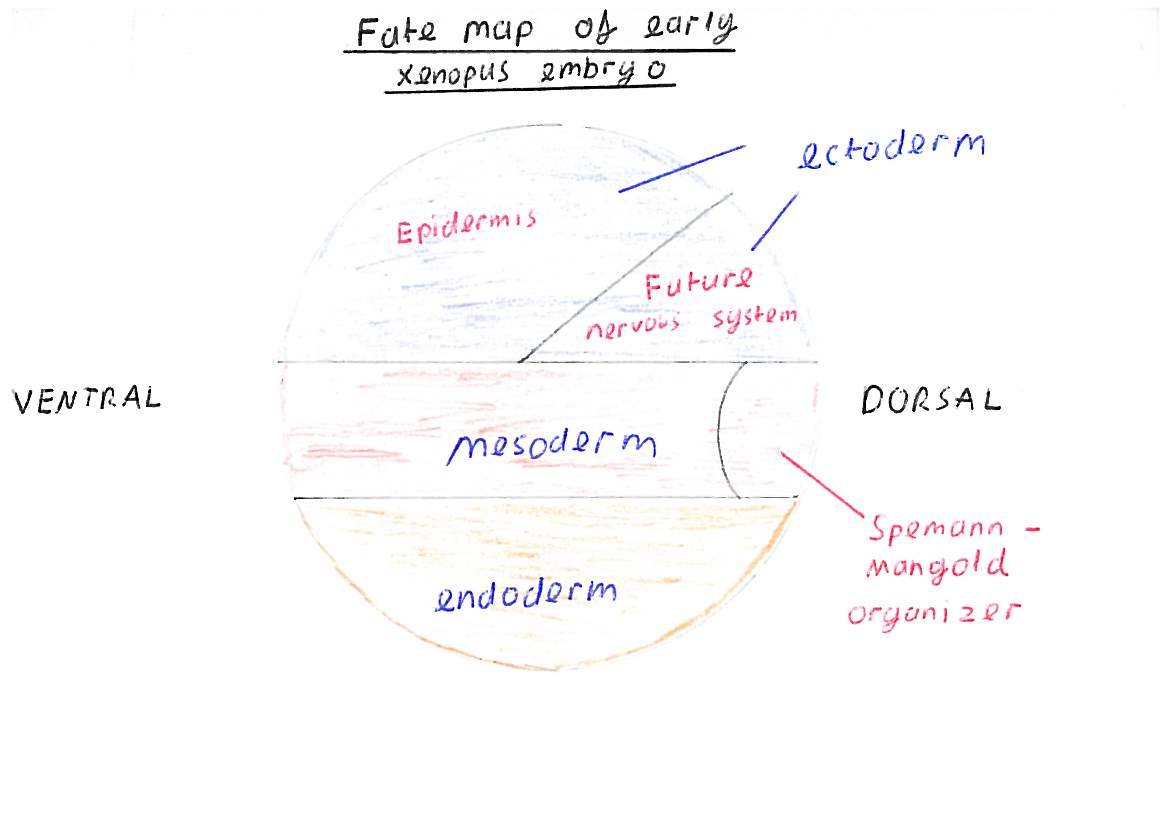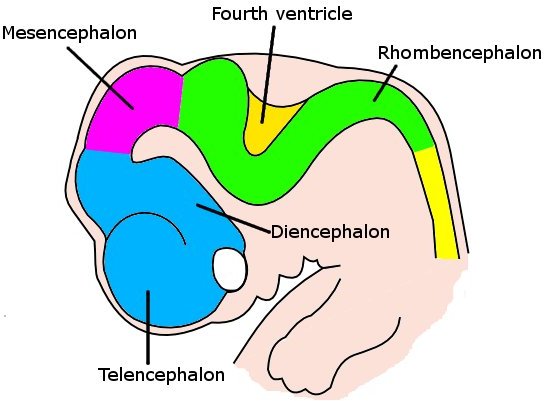
Overview
Early embryo
The formation and pattering of the neural tube in the Xenopus embryo occurs during gastrulation however this isn’t the first step after fertilisation. The sperm point of entry to the embryo is important for establishing the initial dorsal / ventral axes of the embryo. Sperm entry can occur anywhere in the animal hemisphere of the embryo and its entry into the egg results in cortical rotation where the outer layer of cytoplasm (cortex) rotates relative to the denser core. This relocates maternal dorsalizing factors from the vegetal hemisphere nearer to the midline of the embryo and specifies the dorsal region. The region opposite this becomes the ventral region of the embryo. The rotation requires microtubules and failure to rotate results in the blocking of further anterior and dorsal development. Dorsalizing factors in the vegetal region on the future dorsal side of the embryo establish the Nieuwkoop center that is initially responsible for establishing the dorsal / ventral axis. Its main function however is to inducethe Spemann-Mangold organiser.

Formation and patterning of the neural tube
Neural tissue is induced from the dorsal ectoderm by signals from the mesoderm during gastrulation. Following this specification the neural plate undergoes neurulation to form the neural tube and while neurulation is occurring the early anterior / posterior and dorsal / ventral axes are being established. A key theme throughout the development of the neural tube is the importance of signalling molecules from other area of the embryo inducing specific perspective neural cells and establishing neural polarity. The more posterior aspects of the neural tube adopt different neural fates to the anterior cells with future caudal regions of the tube developing into the spine while rostrally the brain develops. In rostral regions the neural tube becomes subdivided into the three primary vesicles the prosencephalon (the future fore-brain), mesencephalon (the future mid-brain) and rhombencephalon (the future hindbrain). These regions subdivide further as development precedes e.g. the rhombencephalon gives raise to the myelencephalon and metencephalon. As development progresses numerous smaller signalling centres are established inside the neural tube which is vital for the patterning and segregation of more specific areas of neural tissue. The formation of the adult nervous system is therefore dependant on the correct combination of signalling molecules being expressed sequentially and at the correct times. These lead to the patterning of specific regions of the neural tube and establish other signalling centres which together subdivide the neural tube into functional domains that leads to the development of a healthy adult.
These regions subdivide further as development precedes e.g. the rhombencephalon gives raise to the myelencephalon and metencephalon. As development progresses numerous smaller signalling centres are established inside the neural tube which is vital for the patterning and segregation of more specific areas of neural tissue. The formation of the adult nervous system is therefore dependant on the correct combination of signalling molecules being expressed sequentially and at the correct times. These lead to the patterning of specific regions of the neural tube and establish other signalling centres which together subdivide the neural tube into functional domains that leads to the development of a healthy adult.
Image courtesy of wikicommons this image is in the public domain and thus free of any copyright restrictions
Neural tube defects
Defective neural tube closure can result in three main conditions spins bifida anencephaly and encephaloceles. Anencephaly is a lethal condition however the severity and symptoms of spina bifida and encephaloceles can vary and sufferers can survive. Any condition in which the nerves of the spine or brain are exposed, and therefore can be injured, will lead to nervous damage and possibly paralysis even before birth. However surgery to move ectopic areas of nervous tissue back under the protective covering of the spine or cranium can have successfel outcomes although at least moderate disability is usually present. By eating the correct diet prior to attempting for a child the risk of neural tube defects can be dramatically cut. If in any doubt preconception then speaking to a doctor or clinician can help ensure a healthy child.

Image courtesy of wikicommons the copyright holder of this work allows anyone to use it for any purpose